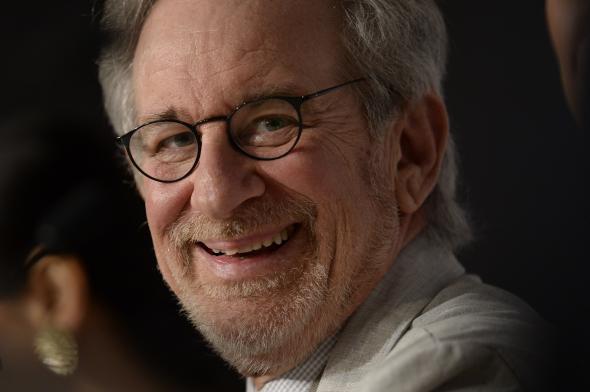By any standard, Steven Spielberg has had a charmed career. In the more than four decades since his first movie, 1971’s Duel, he’s never gone more than four years without releasing a new movie, and he holds more spots on the American Film Institute’s list of the 100 greatest American films of all time—five—than any other director. And yet the piddling box-office returns and lukewarm reviews for The BFG suggest we’re in danger of taking Spielberg’s particular brand of magic for granted. The highest-grossing movies of 2015 were Star Wars: The Force Awakens and Jurassic World, both directed by Spielberg protegés, but Spielberg’s own Bridge of Spies took in only a tenth as much, and though it nabbed an Oscar nomination for Best Picture, its scattershot acknowledgement in other categories made even that honor feel a tad perfunctory. Of course it was superlatively directed, impeccably shot, smartly acted. Aren’t they all? Ho hum, another masterpiece.
Critics haven’t exactly savaged The BFG: It sits at a respectable 71 percent “fresh” on Rotten Tomatoes and has a score of 66 on the Metacritic scale, toward the low end of “generally favorable reviews.” But there’s been little excitement for the film outside the Spielberg diehards. The general tenor of the response might best be summed up by the critic who called it “like hearing grandpa tell an okay bedtime story.”
But it’s worth pausing to reflect on all that Spielberg has given us, and continues to, even when his films are only OK. The BFG isn’t Spielberg’s best movie, but it’s astonishing in spots, especially when it comes to the marriage of technology and artistry that brings Mark Rylance’s Big Friendly Giant to life. Spielberg is as old-Hollywood as it gets, but he’s never stopped learning new tricks, even as younger directors keep launching their careers recycling his old ones. Bridge of Spies was even better, featuring one of the best performances of Tom Hanks’ career and advancing a sophisticated, if largely overlooked, notion of national identity and patriotic duty. Both movies have their corny spots, those moments when you can feel the familiar machinery of Spielbergian uplift clicking into place, but there’s still no one who evokes honest, uncynical sentiment with his skill and heart.
At least there’s one small consolation for the Spielberg faithful. Parents may have passed on The BFG, but they’ll be taking their kids en masse to The Secret Life of Pets on Friday; current estimates have it at four times The BFG’s opening-weekend take. It’s a genial enough Toy Story knockoff, with domestic animals substituting for action figures, but there’s one sequence in the film’s climax where the tension ratchets up noticeably as a truck careens over the side of a bridge and dangles in midair, a helpless animal trapped on its slowly cracking windshield. A sequence, in short, that looks an awful lot like this:
No matter what you think of Jurassic Park: The Lost World, that sequence is one of Spielberg’s absolute best, fiendishly complex yet elegantly simple and characteristic of the care with which he approaches even the most perfunctory of assignments. The gestalt might not have been perfect, but some of its parts are magnificent. (And let’s be honest, it’s a movie about dinosaurs: We’re here for the parts.)
Spielberg won’t suffer any adverse affects from The BFG’s failure: He’s already shooting his next movie, Ready Player One, with a long string of projects lined up after that. But when audiences who skipped The BFG go for The Secret Life of Pets, they’ll be choosing a shiny bauble over a flawed gem. Spielberg loses nothing, but we lose a lot.
